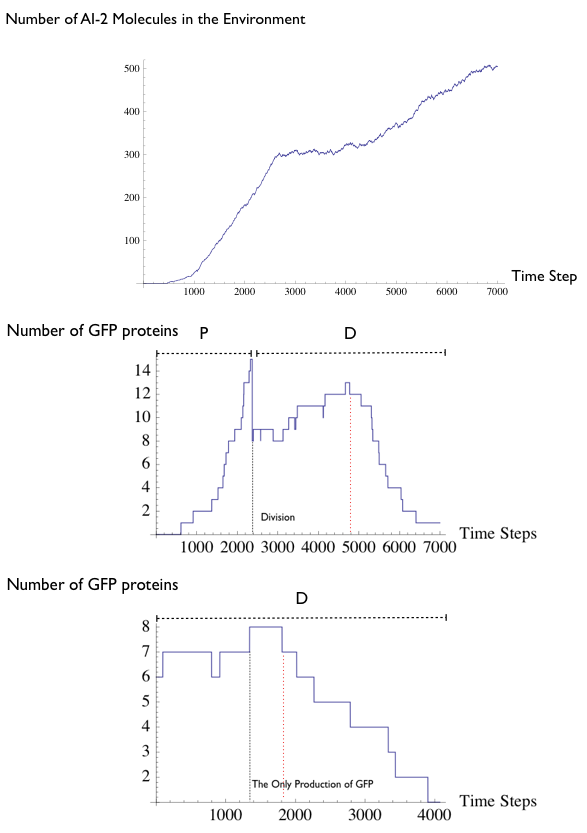This paper is being done very soon, I just share some of the new results discussed in this paper here:
As we all know, bacterial cell division is the process by which a bacterial cell creates two genetically identi-
cal daughter cells. It takes approximately 20 minutes for a newborn bacterial cell to reach to the
next division stage in a proper environmental condition. Within this 20 minutes, parental genetic
materials and its essential components and organelles are duplicated and distributed between the
two daughter cells. However the chemicals available within the parent cell are not duplicated,
whereas they are equally distributed between two daughter cells. One of the characteristics of
bacterial populations is that they increase in size exponentially in optimum environment. How-
ever, toxic waste products and competition for food and nutrients reduce the speed of population
growth and stabilize the number of bacteria in the population. Having this function implemented will help us to observe more realistic emergent properties in the system:

This figure demonstrates the comparison of production and degradation of GFP proteins in parent cells and newborn cells. The First graph
shows that the number of AI-2 molecules in the environment is continuously increasing over the 7000 steps. The second
graph shows the number of GFP proteins within one of the parent cells (indicated by ”P”) in the simulation. This cell
keeps producing GFP proteins up to the division point. After that the newborn daughter cell (indicated by ”D”) continues
the production of GFPs, however it does not last very long as this cell reaches to the point (indicated by red line) that
recognizes the high concentration of AI-2 in the environment and cancel the production of GFPs. After this point, the
degradations of GFPs occur. Graph 3 demonstrates the number of GFP proteins in one of the newborn cells in the
simulation and implies that the production of GFP proteins occurs once (indicated by black line) in this cell. However
after very soon the cell changes its biological cascade and hence the inherited GFP proteins and the produced one are
degraded. The reason for observing this behavior is since the concentration of AI-2 molecules in the environment is high
by the birth time of daughter cells, they switches to the second biological cascade faster than their parent cells that keep
producing GFPs for more than 2000 time steps.

